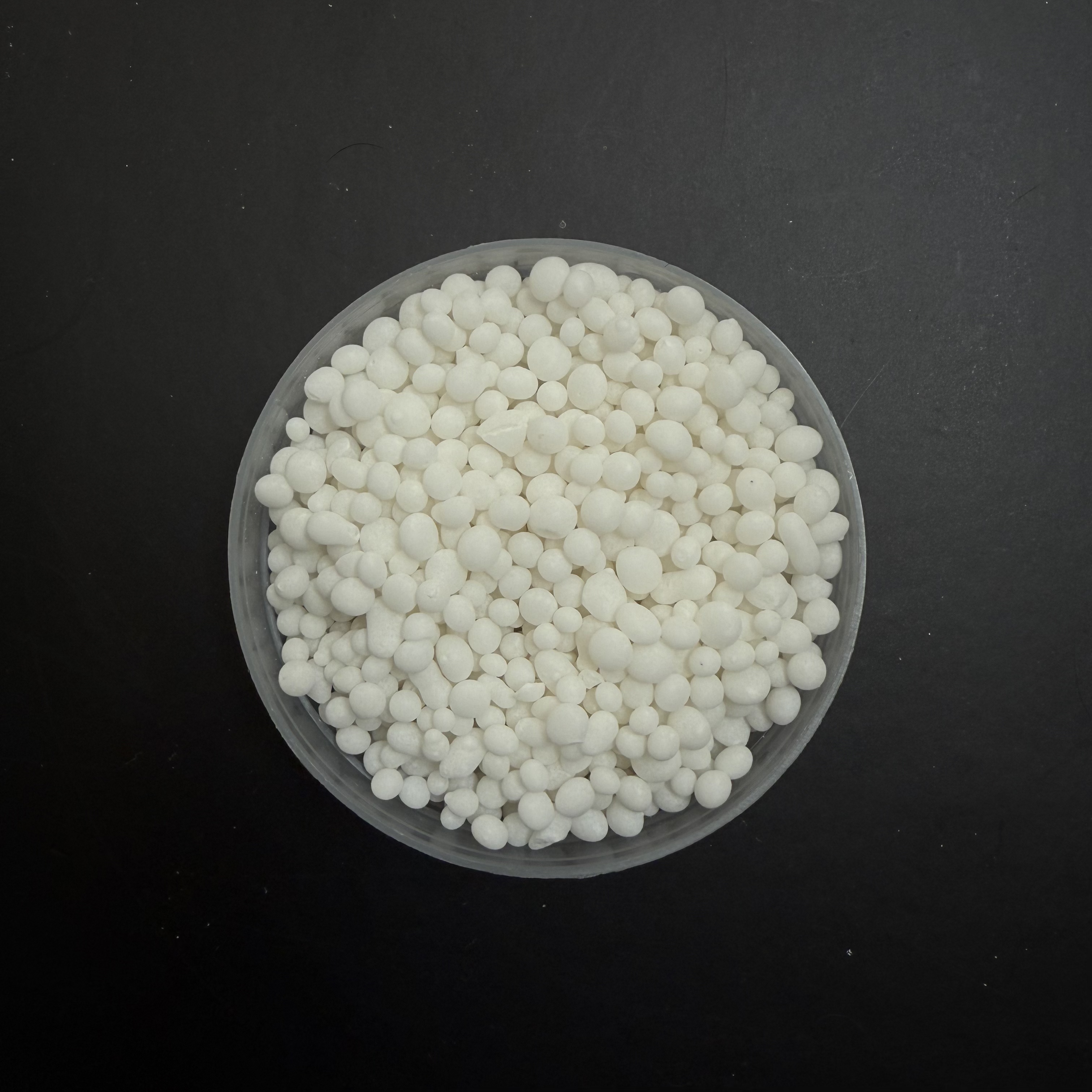1. Composition and Functional Mechanisms
NPK40-0-5 is a high-nitrogen (40%), phosphorus-free, and low-potassium (5%) compound fertilizer designed for specific crops and soil conditions.
- Nitrogen (N): Promotes chlorophyll synthesis and stem/leaf growth, particularly suitable for crops in vegetative growth stages (e.g., leafy vegetables, turfgrass).
- Zero Phosphorus (P₂O₅): Ideal for phosphorus-sufficient soils (e.g., fields with long-term organic fertilizer use), avoiding risks of soil compaction or eutrophication.
- Low Potassium (K₂O): Balances stress resistance (e.g., cold/disease tolerance) and fruit quality enhancement, suitable for potassium-sensitive crops (e.g., tobacco) or late growth stages.
2. Key Applications
- Leafy Vegetables: Accelerates leaf expansion in crops like cabbage and kale, shortening growth cycles by 30% in spring planting.
- Turfgrass Maintenance: Sustains lawn density and color with continuous nitrogen supply while reducing post-trimming nutrient loss.
- Young Fruit Trees: Enhances canopy development in citrus and tea saplings when applied during bud initiation.
- Soil Remediation: Addresses nitrogen-deficient but phosphorus/potassium-rich soils (e.g., sandy soils) or paired with complementary fertilizers.
3. Production Technology and Advantages
- Raw Materials: Industrial-grade ammonium sulfate and urea ensure high-purity nitrogen, combined with potassium chloride/sulfate for uniform granulation.
- Extrusion Granulation: High-pressure (30–50 MPa) molding produces ≥25N compressive strength granules with 90% sphericity, ideal for mechanized spreading.
- Cost-Efficiency: Utilizes by-products like phosphogypsum and waste acid as binders, reducing production costs by 30%.
4. Usage Guidelines
- Timing: Apply during vegetative growth (e.g., tillering stage) to avoid delayed maturity from excessive nitrogen.
- Combination: Pair with foliar fertilizers (e.g., 0.2% urea + 0.3% KH₂PO₄) to replenish micronutrients.
- Environmental Mitigation: Split applications (3–4 doses in rainy seasons) minimize nitrate leaching risks.
5. Global Market Potential
-
Asia:
- India: High demand for rice and maize cultivation under modernization initiatives.
- Southeast Asia: Myanmar and Vietnam prioritize leafy vegetables, accounting for 59.2% of China’s compound fertilizer exports.
- South America: Brazil and Argentina favor NPK40-0-5 for soybean and maize rainfed farming.
- Africa/Middle East: Egypt and Iran adopt it for drought-resistant crops, leveraging low potassium to mitigate soil salinity.
6. Innovations and Trends
- Precision Agriculture: Integrates soil testing for dynamic nutrient adjustments in drip irrigation systems.
- Slow-Release Upgrades: Resin-coated or humic acid-embedded formulations extend nitrogen release to 60–90 days.
- Eco-Friendly Additives: Bio-based enhancers (e.g., phytic acid) improve utilization rates and reduce toxicity.
7. Quality Standards
- Chinese Standards: Complies with GB 15063-2020 (nitrogen deviation ≤1.5%, hardness ≥20N).
- International Certifications: ISO 9001 and EU REACH certifications align with high-end agricultural exports.


